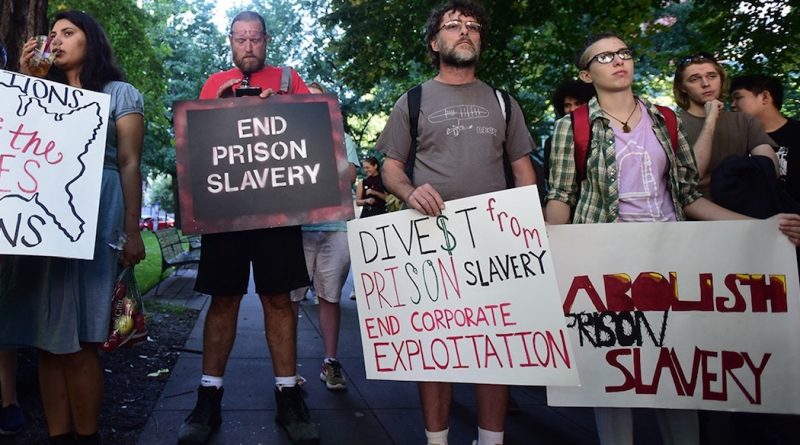Prisoners Strike Across U.S. Demanding Higher Wages
Kaitlin Lewis
Contributing Writer
In August 2018, a prison strike took place across the U.S. in response to a deadly riot at the Lee Correctional Institute in April 15 that left seven inmates dead. Protesters outlined 10 demands, including a call for better food, better living conditions and, most importantly, higher wages for inmates.
It still is unclear how widespread the protests were; although, action was reported in a handful of states, including the Toledo Correctional Institution in Ohio. The protest started on Aug. 21 and lasted until Sept. 9, and those who participated joined sit-ins, hunger strikes as well as refusing to work.
The call for higher inmate wages comes from an argument that modern-day slavery exists in many correctional institutions in the U.S. In states such as South Carolina and Texas, inmates are forced to work to avoid punishment, sometimes for no pay. In the state of Ohio, inmates can make as low as $6 per month. These low wages leave those incarnated with almost nothing saved for when they are released.
Kevin Rashid Johnson, who is serving a life sentence at a state prison in Virginia, says this is a form of modern-day slavery.
“Slave labor still exists in the United States in 2018,” Johnson wrote to the The Guardian. “In fact, slavery never ended.”
The prison strike originally was called by Jailhouse Lawyers Speaks (JLS), an anonymous group of activists who also supported the nationwide strike that occurred in 2016. The group originally had planned for another protest in 2019, but bumped up the date because of the deaths and injuries that occurred at Lee.
The protest was not confined inside the prison walls. Rallies took place outside of detention centers and in city squares in support of the prisoner demands.
On Aug. 21, a group of former prisoners, prison experts and family members of those affected by the riot at Lee delivered the demands to South Carolina Governor Henry McMaster and Department of Corrections Director Bryan Sterling. Other rallies occurred in Atlanta, Los Angeles and eastern North Carolina, and were spread through videos posted on social media.
Inmate strikes are not a new occurrence, but in recent years prisoners have been able to mobilize protests state to state, which is something older protests could not achieve. The 2018 strike is believed to be one of the biggest in U.S. history; although, the largest is the prison strike of 2016, which occurred in 24 states.
The use of social media and news channels is making the spread of ideas easier, according to Amani Sawari, a spokeswoman for JLS.
“Prisoners have heard on the radio, they’ve seen on TV,” Sawari said to the New York Times. “We know this is widespread.”
She added the strike is bringing awareness to issues faced by prisoners.
“People are starting to realize how disgusting it is how human beings can be paid pennies.”
No immediate responses have come from law enforcement regarding the protests. But bringing public attention is the first step in sparking a difference, according to Paul Wright, the executive director of the Human Rights Defense Center.
“Do we expect that, hey, there’s a prison strike and all of a sudden tomorrow prisoners are going to be paid the minimum wage and get adequate health care?” Wright asked. “Probably not, but it’s a process.”
Photo courtesy of theintercept.com.

